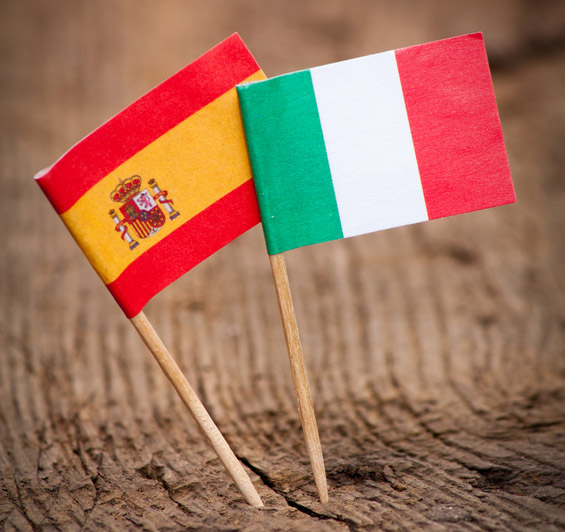Some differences and similarities between the Spanish and Italian idioms: learn Spanish in Bilbao
Have you ever wondered why Italians and Spaniards can understand each other even if they each speak their own language? According to recent studies, the lexical similarity between Spanish and Italian is over 80%, precisely 82%. A very high percentage, right? In this article we will analyze how and why these two languages are so similar and also some of their differences.
First of all, it is important to know that Italian and Spanish are Romance languages, i.e. derived from Latin, which was the official language of the Roman Empire (27 BC - 395 AD). With the collapse of the Roman Empire around the 5th century, dialects of Vulgar Latin began to form in some of the Roman territories and from these dialects derive the main European languages: French (France, Belgium, Switzerland, Luxembourg and Monaco), Italian (Italy, Switzerland, Vatican City and San Marino), Spanish Spain), Portuguese (Portugal), Catalan (Andorra) and Romanian (Romania and Moldova).
Being Neo-Romance languages, therefore, Italian and Spanish share many basic words. The Italian word amico (friend) becomes amigo in Spanish, the word citta’ in Spanish becomes ciudad and so on. Beware of false friends though: for example, the Italian word aceto does not correspond in Spanish to the word aceite but to the word vinagre.
Furthermore, both languages have a similar structure regarding tenses and, together with this, a system of conjugation of verbs which requires the agreement of gender and number. And in Italian, as in Spanish, we use the third person singular to address a person with respect.
Finally, what makes them similar are the accents. Indeed, in both languages we find the presence and use of accentuation.
It is therefore not surprising that an Italian student learns Spanish on average faster than an English or German colleague. However, there are also important differences between the two languages which the Italian student must pay more attention to in order not to make mistakes.
The first major difference is phonetics. Pronunciation of Spanish words can be more direct, with fewer stressed vowels and more emphasis on consonants.
Another significant difference concerns the grammar. Spanish has a subject-verb-object sentence structure, while Italian generally follows the subject-object-verb sentence structure. This means that you need to pay attention to the word order when switching from one language to another. Furthermore, Spanish has two more verb forms: the future subjunctive and its compound. Finally, the distinction of "para" and "por" is difficult to understand even for Italian students because in Italian there is only the preposition per.
The list of different differences could go on but these are the main ones.Therefore, if you are an Italian student you will certainly have an extra advantage but you should pay close attention to false friends and these small big differences.



 English
English Español
Español Deutsch
Deutsch Français
Français Italiano
Italiano Ру́сский
Ру́сский 

